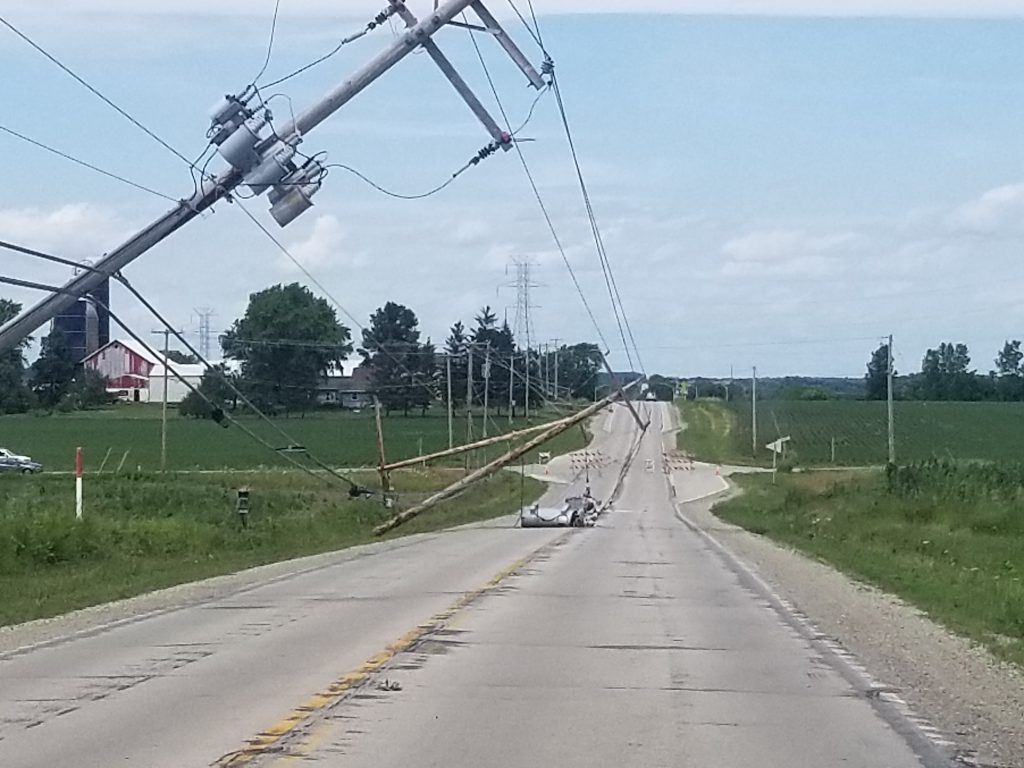
By PR-Tech (Portland, Or.)
A downed power line can be extremely dangerous, as it can be lead to serious injury or death. The can also be the cause of fires and power outages that can create additional hazardous situations.
While your first instinct is to call first responders for assistance or the utility itself to report the downed power line – and that’s certainly a key step for everyone’s safety – it’s important to be aware of how you should conduct yourself if you encounter a downed power line. Here are some best practices for handling a downed power line for your safety and the safety of those around you.
The Dangers of a Downed Power Line: Outages, Fires, and Electrocution
Most people know that a downed power line can cause outages that are both dangerous and disruptive. Worse they can cause fires…the California Public Utilities Commission (CPUC) estimates about 10% of California wildfires are caused by downed power lines, for example.
They also cause risks to the personal safety of those around. Downed power lines can energize the ground up to 35 feet away, according to the Electrical Safety Foundation International (ESFI), a non-profit organization dedicated to promoting electrical safety at home and in the workplace. The range can be even farther in rainy or wet conditions because electricity flows through water.
A power line can also energize nearby objects, says the Occupational Safety and Health Administration (OSHA), citing examples such as metal fencing, pipes, plants, buildings, and telephone/ fiber optic cables.
How Utilities Can Play a Part
While downed power lines can cause injury and even death, a lot of these tragedies could be avoided if utilities were more careful, writes attorney Jeffrey Feldman on his blog, “Electrocuted.com.” “Electrocution accidents involving downed power lines that hurt or kill people are often not really accidents at all. They occur because the utility company failed to inspect and repair its power line structure as it was legally required to do, or ignored clear evidence of deterioration, so the wires fall.”
That’s why utilities must make safety their No. 1 priority, from maintaining the lines to making sure they are adequately flagged with power line markers to protect aircraft and people. Replacing aging power lines and maintaining infrastructure is also important to save lives.
Feldman reports that electrical hazards cause more than 300 deaths and 4,000 injuries each year among the U.S. workforce, making it the sixth leading cause of workplace deaths in America. [Another statistic from the U.S. Bureau of Labor Statistics estimates that there were 166 deaths in 2019.]
Immediate Response to Seeing a Line Fall
If you’ve seen a power line fall, you are probably wondering how to keep yourself safe.
First always assume a downed power line is “live,” that is, energized, and thus dangerous. That’s why you never want to approach one, try to move it, drive over it or come into contact with it at any time. Also never drive through standing water if there is a downed power line in it.If you see the power line fall, stay away and warn others to stay away also. Call 911 to report the report downed power line.
Unfortunately, if you don’t see the power line fall and just come across it, many people don’t know what a downed power line looks like – usually they expect it to be humming or sparking – but not all power lines make noise at all. If you see a fallen line that appears to be a telephone or internet line, treat it like a power line. The safest option is to assume that any cable you see could be dangerous and treat it accordingly.
Downed Power Line Safety: How to Save Yourself and How to Save Others
As mentioned, the first rule of downed power line safety is never try to move a downed power line and always assume that it is dangerous. If you are in your car and there’s no fire or smoke, stay in your car, avoiding touching any part of the car frame, and call for help.
However, if there is a fire, you’ll need to get out of your car. The main precaution to take is to not touch the ground and your car at the same time with any part of your body or even your clothing because it can turn your body into an electrical conductor and could kill you.
Here’s the process you should take: First, remove loose clothing and open the car door without touching the metal door frame. Step onto the frame of the car, then jump from the vehicle with your feet together. Move away in slow, shuffling steps making sure never to lift your feet so that both feet are in constant contact with one another and always touching the ground. This minimizes the path of electric current and helps you avoid electrical shock.
Treating the Injured
If you see someone whom you believe has suffered an electric shock, the Centers for Disease Control and Prevention (CDC) recommends that you first summon medical help. Then they remind you not to touch the person in case they are still in contact with the electrical source, as that could pass the current through you. If you have identified they are not, you may provide interim medical help. The person may be experiencing breathing and pulse difficulties; begin CPR, and if they are showing signs of shock lay them down with their head slightly lower than their trunk and legs elevated.
Being aware of the dangers of downed power safety lines and knowing what to do if you encounter one can save lives – yours and others. For more information on how P&R Tech helps promote power line safety and what your utility can do to further the cause, contact us today.
